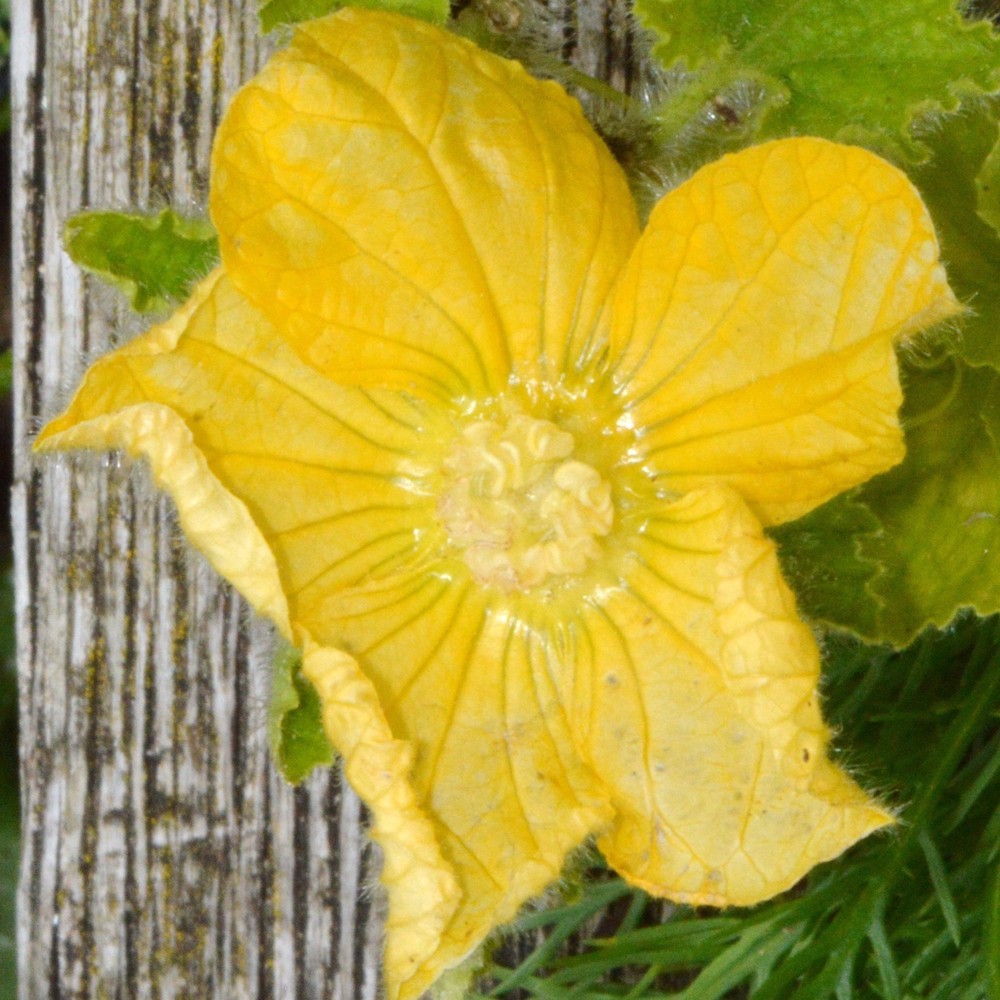Wax gourd
(Benincasa pruriens hispida)

Description
Benincasa hispida, the wax gourd, also called ash gourd, white gourd, winter gourd, tallow gourd, ash pumpkin, winter melon, Chinese preserving melon and (Alu) Puhul, is vine grown for its very large fruit, eaten as a vegetable when mature. It is the only member of the genus Benincasa. The fruit is covered in a fuzzy coating of fine hairs when young. The immature melon has thick white flesh that tastes sweet. By maturity, the fruit loses its hairs and develops a waxy coating, giving rise to the name wax gourd. The wax coating helps to give the fruit a long shelf life of up to a year. The melon may grow as large as 80 cm in length. It has yellow flowers and broad leaves. It is native to South and Southeast Asia. The wax gourd is widely grown throughout Asia, including Java and Japan, the places where it is thought to have originated. One variety of the plant, called chi qua (Benincasa hispida var. chieh-qua), is commonly used in Asian cuisine. The name "winter melon" that is sometimes given to this plant is based on the Chinese name dōngguā; however, the character can also mean “gourd” or “squash.” It is likely that the name “melon” is given because this gourd is sometimes candied or made into a sweet tea. It is grown in well-drained loam and sandy soils in warm, mild climates, and will not tolerate frosts. It is grown in riverbeds or furrows, and needs constant irrigation during the growing season. The wax gourd can be stored for many months, much like winter squash. Ash gourds of the Indian subcontinent have a white coating with a rough texture (hence the name ash gourd). Southeast Asian varieties have a smooth waxy texture. It is one of the few vegetables available during winter in areas of deciduous vegetation. In India, the wax gourd is recognized for its medicinal properties in the Ayurvedic system of medicine. It also has significance in spiritual traditions of India and Yoga, where it is identified as a great source of prana. In Cambodia, it is known as tralach, and used in soup and stews in Cambodian cuisine. It is commonly used to make samlor tralach, which is winter gourd and pork soup, or stuffed pork in the gourd. In Chinese cuisine, the gourds are used in stir fries or combined with pork or pork/beef bones to make winter gourd soup, often served in the scooped out gourd, carved by scraping off the waxy coating. It is also chopped and candied as wintermelon candy, commonly eaten at New Year festivals, or as filling for Sweetheart cake.
Taxonomic tree:







